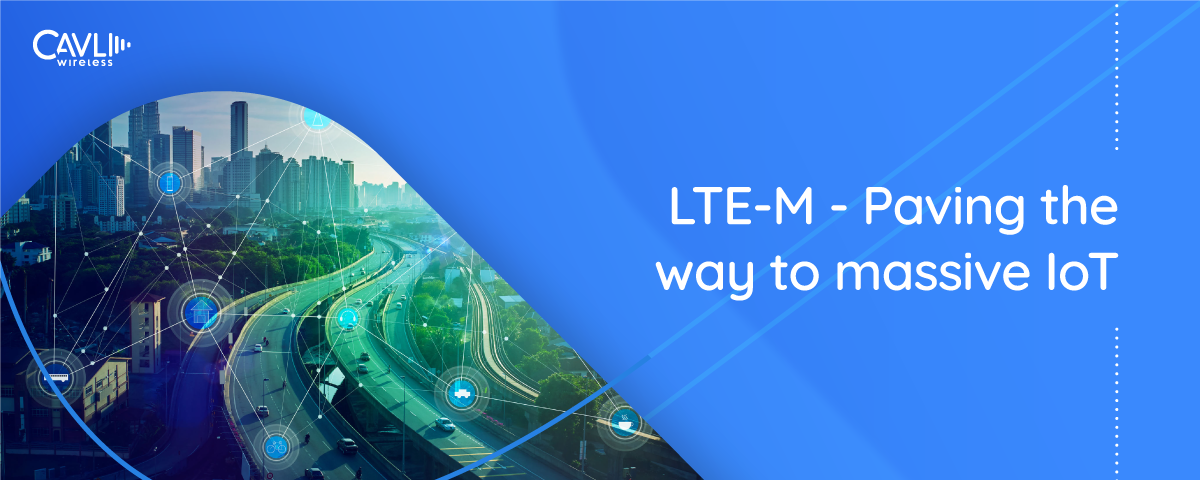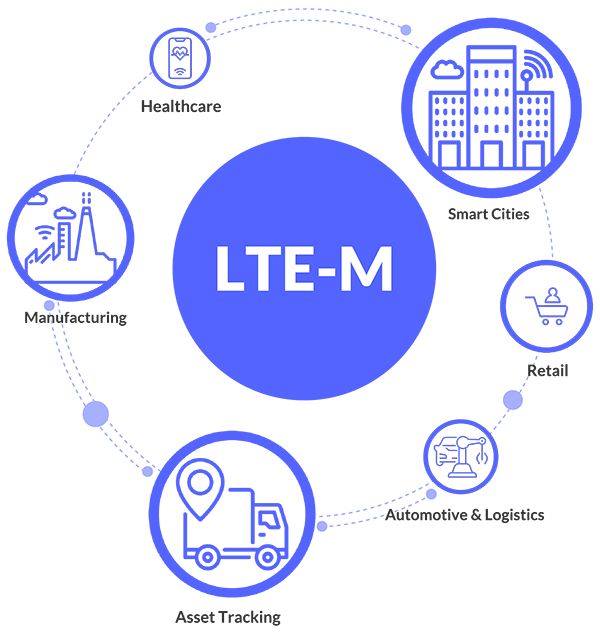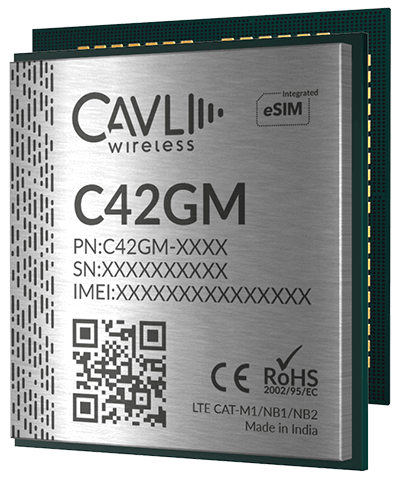Akhil A Zeeb
Co-founder, Director of Global Sales
Cavli Wireless

LTE-M is a cellular Lower Power Wide Area (LPWA) radio technology
developed for IoT use cases. It was designed to address the
fast-expanding market for low power wide area IoT applications. The
technology standard was developed and frozen in 3GPP Release 13
specification in 2016 and has been improved in Release 14 and 15
subsequently. LTE-M is the industry term for LTE MTC (LTE - Machine
Type Communication), which refers explicitly to LTE-M1. It is an
abbreviation for Long Term Evolution (4G) category M1 or Long Term
Evolution of Machines. LTE-M supports a wide range of applications
allowing a battery life of more than ten years. LTE-M is deployed
via a software upgrade to existing base stations. As of April 2020,
a total of 45 operators in 32 countries deployed
LTE-M11.
1 Ericsson Mobility Report April 2020
The burgeoning number of connected devices lead to the need for a dedicated low power wide area cellular IoT network. 3GPP responded to it with two technologies LTE-M and NB-IoT. LTE-M has been made the de facto choice when crucial data has to be sent on a real-time basis with sufficient bandwidth and network speeds to address the needs of M2M communication. With the 3GPP Release 14, speed of LTE-M has been upgraded by launching LTE-M2 which boasts 4Mbps speeds compared to 1Mbps from the previous generation which can be translated to use cases with higher bandwidth requirements and for devices in mobility & voice capabilities.

IoT devices deployed in remote locations have limited access to power and are supported by battery. The battery life for these devices is very critical since these devices are usually left unattended for years. LTE-M does this by implementing Power Saver Mode (PSM) & extended Discontinuous Reception (eDRX), two power-saving methods launched with 3GPP Release 13 designed for IoT devices to conserve battery resources and potentially achieve a 10-year battery life. Both PSM & eDRX can be used in conjunction with each other for maximum efficiency and benefits.

With global requirements for ‘Smart Devices’ on the rise, millions of IoT devices need to be deployed across the world. To create a feasible approach plan, it is vital to keep costs down as much as possible. LTE-M provides the benefits of a cellular system but at a fraction of the cost by relying on existing LTE networks for connectivity as well as an easy upgrade to 5G NR systems for massive IoT (mIoT) deployments.

LTE-M supports high bandwidth capability up to 1Mbps, which is sufficient for most M2M IoT applications without hogging the total network bandwidth. Combined with a low latency period of 50-100ms, LTE-M can prove beneficial for even the demanding applications.

LTE-M rides on the LTE spectrum which provides extended coverage with up to 156dB at 20dBm power output. This allows LTE-M capable IoT devices to have good penetration through buildings and even underground, thus opening-up more extensive use case scenarios.

LTE-M works on the LTE bands and is also 5G ready. This means that LTE-M can leverage the high network capacity capabilities of 5G networks in massive IoT (mIoT) to deploy millions of devices in smaller areas.

LTE-M is one of the only LPWA technologies that feature low latency. With an average latency period ranging from 100 to 150 milliseconds, LTE-M has one of the lowest latency which allows it to be used for applications such as real-time voice recognition and tracking.

Perhaps one of the most unique features of LTE-M is the ability to use VoLTE or “Voice over LTE” to transfer audio and call through the LTE network which runs on IP. This allows manufacturers to have voice support in their devices while not having to use the traditional GSM network to route the calls.

LTE-M with its low power consumption, higher data throughput and low latency proves to be an excellent choice for a wide variety of applications that depend on real-time data transfer while having the need for long battery life.

The low latency factor of LTE-M makes it the perfect choice for real-time Asset Tracking applications when paired with GNSS/GPS support, to get pin-point accuracy of vehicles, containers and other devices in mobility.

Fleet management, route optimisation, location tracking are few of the possibilities in the automotive & logistics industry where LTE-M can be used to increase efficiency and be used to receive vehicle data and statistics along with driver behaviour.

With the sensitivity and accuracy required in healthcare equipment, regular maintenance is crucial. LTE-M allows for remote diagnostics of the equipment used in hospitals and also allows for patient monitoring by sending diagnostic information directly to doctors.

The retail industry uses PoS (Point of Sale) machines as the payment gateway for customers to pay for the purchased items. These devices along with other products in the retail industry will benefit from the low-latency connectivity provided by LTE-M.

Smart City applications such as Smart Street Lighting, Environmental Monitoring, Smart Parking and more allow more efficient control over city resources and lower the environmental impact by taking sensor data from devices deployed around the city and taking real-time data analytics and actions based on it. LTE-M allows this by providing up to date data information.
The IoT landscape has truly become a fragmented space with dozens of technologies dedicated to ensuring smooth data flow between devices and the cloud. Among these, LPWA technologies hold the key to large scale deployments that require lower data, lower power consumption and at the same time lower the capital needed for a full-scale roll-out. LTE-M provides a balance between all these requirements and also has the added advantage of being able to latch on to 5G networks when it is ready and helps to homogenize the existing cellular network standards into a single global standard.
Among LPWA technologies, LTE-M is the prime candidate to help migrate the existing legacy devices that run sunset technologies such as 2G & 3G, while providing similar bandwidth and data speeds and at the same time reduce the device power consumption & increase battery life.

Cavli Wireless C42GM - LTE Cat M1/NB1/NB2 IoT Module with
integrated eSIM & GNSS
The C42GM Smart IoT Module has been meticulously designed for LPWA deployments with LTE-M1 and NB-IoT capability along with support for network bands around the world with the integrated eSIM & in-build GNSS/GPS, makes it an apt-choice for use cases such as logistics and vehicle tracking. The C42GM is a one-size-fits-all solution for any IoT LPWA requirements. The integrated eSIM is preloaded with global connectivity and customers can subscribe to LPWAN networks across the globe through Cavli Hubble IoT Platform.
For further information on how to get your product ‘Smart Connected’, contact our Solutions Support team at solutions@cavliwireless.com.